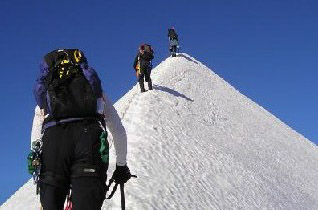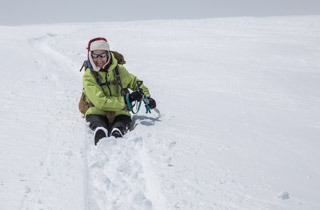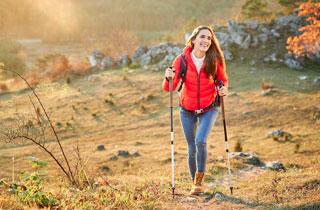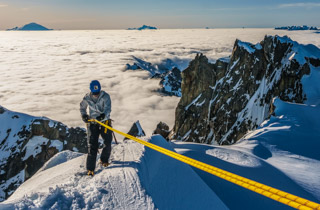Hiking Cardiovascular Training
Hiking Cardiovascular Training
To prepare for your favorite hiking adventures, discover how to increase your aerobic and anaerobic capacity with these suggested articles.
In order to build quadriceps strength and improve fitness without putting excessive stress on tentative or already painful knees, you might want to consider adding some backward travel to your training program. Try a few short bouts of walking backward up a gently inclined slope, on a slightly ramped treadmill, or jogging backward to test out how it feels.
Who Might Be a Candidate?
People who may benefit from backward-walking training include anyone who:
- Is undergoing post-surgical knee joint rehabilitation.
- Suffers from muscle strains of the hip, groin, hamstrings, or lower back
- Suffers from lower extremity injuries including sprained ankles, Achilles tears, or shin splints
- Has tried everything including ibuprofen, ice/heat treatments, complete time off from training, physical therapy, stretching, and more traditional strength training without sufficient results
- Is looking for a different stimulus or cross-training option
- Needs to be able to change directions rapidly and occasionally run backward in his or her sport (such as soccer, football, basketball, rugby, or lacrosse)
One of the elements we address throughout our book, The Outdoor Athlete (Human Kinetics: 2009) is the importance of including Back-to-Backs in programs designed for any multi-day adventure. In this article, we explore the basics of who, what, when, where, why, and how to do them for your sport.
Anyone who will be participating in multi-day trekking, backpacking, mountaineering, or climbing adventures with at least two consecutive days of pack carrying during their trip should include several back-to-backs in their training. This would also include anyone who wants to do several single-day hikes with a pack heavier than 10 pounds on successive days from a single launch point.
Not only does this prepare the body physiologically, but it also helps you be psychologically and mentally prepared to carry a pack on successive days without having to rest. Without practicing this basic overnight travel skill, you might find it shocking when you have to do it on a trip. Prepare now, enjoy later.
Whether you are a dedicated backpacker, an aspiring trekker, or a weekend day hiker, you probably have noticed that people hike at different rates over varying terrain. A question most of our clients ask is: How do I get faster? Let’s take a look at the many factors that go into increasing speed. But first, understand one fundamental thing first.
WHY do you want to increase your speed?
See if you relate to any of these:
- You get breathless when you’re hiking with a friend, but you don’t train much during the week. Try adding several aerobic workouts each week.
- You have planned a trip with people who have no trouble navigating difficult terrain you find challenging. Find an irregular trail with blowdowns, scree, talus, snow, roots, or boulder fields, and practice on the specific terrain that slows you down.
- You have no trouble on level terrain, but as soon as you add a pack or hills you struggle. Add targeted leg and core strengthening moves twice a week.
- You need to cover significant mileage in a limited time. Add longer and longer hikes until you can complete a few hikes at 85-90% of the total distance you’re training for.
Determine specifically what you’d like to improve, and then pick a suitable way to train from the suggestions below.
Do any of the following statements sound familiar? “I can go forever, but I also take forever.” “I can’t keep up with the 20-somethings anymore.” “It always seems to take forever to recover.” “Training at 70% of my theoretical max heart rate feels like I’m barely moving. Am I harming myself if I exercise higher than that?”
We hear comments like these constantly from our older clients who lament about how their bodies cannot keep pace with their minds past the half-century mark. Each of these complaints can be eased by using a training routine designed specifically for your sport and to address your body’s particular needs.
Simple Self-assessment
If you identify with any of the opening comments, answer these questions.
1) Have I changed my cardiovascular routine in any way in the past two years?
2) Do I know what my average “go forever” (65-70% MHR) heart rate is?
3) Do I currently do any speed training (a combination of intervals and strength)?
4) Am I happy where I am to keep doing what I’m doing?
If you answered “no” to any one of the four, then continue reading.






